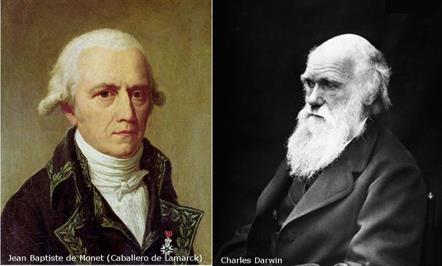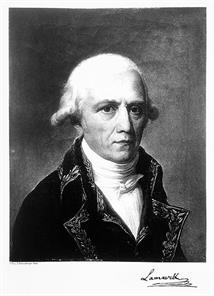PDF chapter test TRY NOW
Based on the evidence discussed previously, we can conclude that all the species of organisms that exist today share a common ancestry.
From the time that life has originated on earth till the end of the \(18th\)century, the organisms showed small and large variations that led to the diversity of life. This is known as evolution.
- The gradual change occurring in living organisms over a period of time is known as evolution.
- The formation of new species due to changes in specific characters over several generations as response to natural selection, is called evolution.
Hence, we can conclude that evolution occurs as a response to natural changes. These natural changes which occur and how these changes gave rise to various new species of organisms explained through the theories of evolution as proposed by Lamarck and Darwin.

Lamarck and Darwin
Lamarckism:
This was proposed by Jean Baptiste Lamarck (\(1744-\)\(1829\)), a French naturalist.

Jean Baptiste LamarckLamarck
He is well known for his theory of evolution. The theory of evolution proposed by Lamarck was published in the book 'Philosophic Zoologique' in the year \(1809\). His theory was popularly known as the 'Theory of inheritance of Acquired Characters" or "Use and Disuse theory" or Lamarckism.
Important!
He coined the terms 'invertebrates' and 'annelida'. Along with Treviranus (\(1802\)), the gave the term biology.
